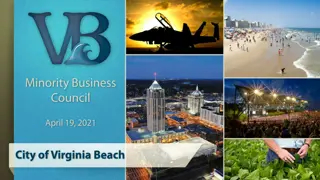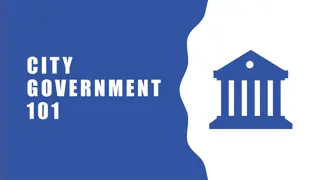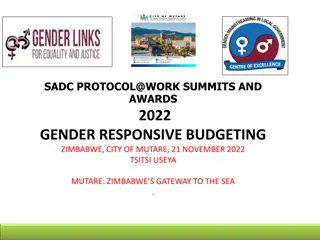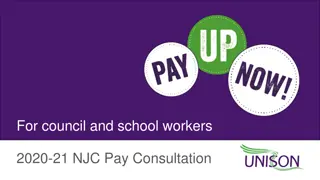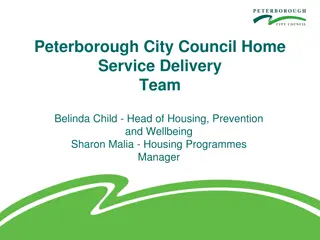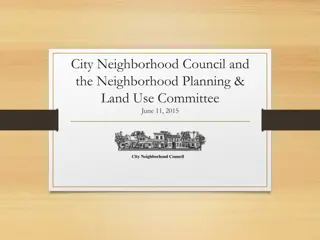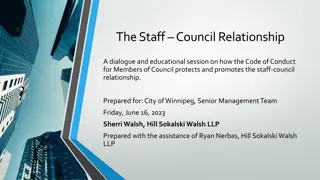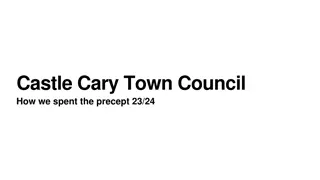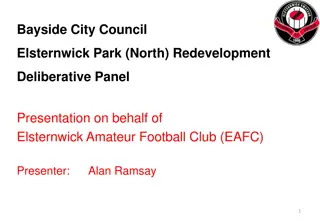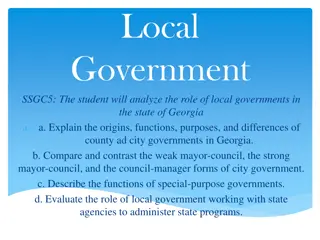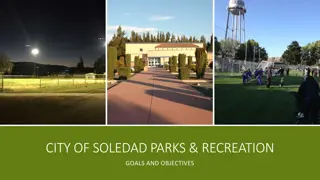
Group Violence Intervention (GVI) Strategy Overview
Explore the implementation, partners, and investments of the Group Violence Intervention (GVI) strategy aimed at reducing gun violence in Wilmington. Learn about the convergence of leadership in addressing this issue, identifying potential shooters, addressing peer dynamics, and the core principles of GVI.
Download Presentation

Please find below an Image/Link to download the presentation.
The content on the website is provided AS IS for your information and personal use only. It may not be sold, licensed, or shared on other websites without obtaining consent from the author. If you encounter any issues during the download, it is possible that the publisher has removed the file from their server.
You are allowed to download the files provided on this website for personal or commercial use, subject to the condition that they are used lawfully. All files are the property of their respective owners.
The content on the website is provided AS IS for your information and personal use only. It may not be sold, licensed, or shared on other websites without obtaining consent from the author.
E N D
Presentation Transcript
Background Information Overview of the Group Violence Intervention (GVI) Strategy Today s Discussion GVI Implementation Partners Investments made to date Support and Outreach effort Questions & Answers
A convergence of leadership to resolve Gun Violence... In 2015, the CDC identified gun violence in Wilmington as an epidemic, conducted a study and submitted a report of its findings to the CDC Advisory Council In 2017, Mayor Purzycki brought on Robert Tracy as Wilmington s Chief of Police Since 2016, CDC Advisory Council continued meeting as the Wilmington Community Advisory Council (WCAC) under Council President Shabazz In 2017, Governor Carney reinstituted the Family Service Cabinet Council and directed a focus on Wilmington, including gun violence efforts with WPD
Potential Shooters likely have: CDC History of emergency room visits as victims of violent incidents (shooting, stabbing, assault) identified Juvenile Justice Involvement risk Childhood Trauma and Maltreatment factors School Disciplinary Events and Truancy Current and past periods of unemployment
Groups and Gangs The CDC Report did not address the role of group-driven gun violence in the Wilmington landscape. What the CDC didn t say Like many cities, Wilmington's gun violence is perpetuated on a retaliatory basis by less than half of 1% of the city s population. GVI is a strategy that exclusively addresses this highest risk target population.
The aim of the GVI strategy is to reduce peer dynamics in the group that promote violence by creating collective accountability, to foster internal social pressure that deters violence, to establish clear community standards against violence, to offer group members an honorable exit from committing acts of violence, and to provide a supported path for those who want to change. National Network for Safe Communities
Do no harm. Strengthen community capacity to prevent violence. GVI Core Principles Enhance police legitimacy. Offer supportive services to those who want help. Get deterrence right. Use enforcement strategically.
Meeting Group Members with clear messages and coordinated action: Community Moral Voice: Your community does not accept your actions. You are hurting the community. GVI Key Messages Social Service Support: We want to help you and will do whatever we can to help you, for as long as you need it. Law Enforcement: If you continue shooting, you and your group will receive full attention of law enforcement. Here is what will happen if someone in your group shoots
GVI Key Message Delivery How do GVI Partners deliver this message to groups and their members?
A Call-in is a face-to-face meeting of law enforcement representatives, community figures, social service providers, and group-involved adults; typically those on probation. The call-in is a communication strategy; its primary purpose is to deliver key messages clearly to the group members present, and through them, back to the entire group with which they are associated. Call-in
When GVI leaders and/or law enforcement visit with key adult group members at their homes or on the streets to keep the anti-violence and offer of support messages alive between call-ins Custom Notification When GVI leaders and/or law enforcement visit with juveniles and/or their legal guardians to introduce or reinforce the anti-violence and offer of support messages
In reach Notification When GVI leaders and/or law enforcement visit with key adult group members while incarcerated or juvenile group members while in detention or other residential settings to deliver the anti-violence message and proactively offer services pending their release back into the community.
Law Enforcement Wilmington Police Department Department of Correction Department of Services for Children, Youth and Their Families Delaware Department of Justice United States Attorney s Office Federal Agencies (FBI, DEA, ATF, US Marshals) Partnership Implementation Social Services DHSS, DOE, DSCYF, DOL, DSHA Nonprofit and philanthropic community Community Members and Community Leaders
State Infrastructure Investment for GVI Wilmington Department Health and Social Services Department of Correction Establishment of a new Division: Director of GVI Deputy Director of Operations Deputy Director of Support and Outreach Management Analyst; Program Manager, (2) Master Case Managers and (2) Youth Advocates in 2020 Establishment of new, specially trained, GVI Probation and Parole unit: 1 supervisor 5 probation and parole officers additional equipment and vehicles Department of Services for Children, Youth and Their Families dedicated staff resources
Governors FSCC Executive Committee (Governor s Office, WPD, DOJ, DHSS, DSCYF, DOC, USAO) (OGOV, LTGOV, DOC, DOL, OMB, DTI, DOE, DSCYF, DHSS, DSHA, DSHS) Answers to FSCC and GVI partners Manage GVI partnership(s) Accountable for program outcomes Director of GVI & staff (DHSS) Provide ongoing, intensive case management to group-involved clients Support & Outreach Law Community Partnerships Enforcement
According to national averages, NNSC predicted that we would see a 10-20% rate of acceptance of social services from the total population outreached. GVI Wilmington Support and Outreach has exceeded the national standard for excellence in engaging the adult group-involved population in year one with an acceptance rate of 42%.
In the first year of Support and Outreach implementation: 43 - Offers made through Call-in/Custom Notifications Support and Outreach Effort 42% (18) - currently enrolled with Support and Outreach and receiving social services and supports No Exit Policy Individuals/families may request services at any time after initial contact; ongoing periodic follow-up (phone, text, in-person) continues indefinitely
The team has a no handoff policy and collaborates directly with public/private partners including: DOJ Community Engagement DSS (SNAP, Medicaid, TANF, etc.) DMV DSHA DPH DSAMH/Community Behavioral Health Providers DSCYF Youth Rehabilitation Services/Prevention and Behavioral Health DOL Re-entry service providers Remanned Project Employers and Landlords DOE/Community-based Educational programs Artisans Bank Support and Outreach Provider Network
18-24 month experience: Voluntary commitment to participate Case Manager/Life Coach assignment Holistic support to household/family Life mapping and navigation Goal attainment Transformative travel Community involvement, advocacy, and restorative justice activities Graduation Alumni Fellowship and Leadership opportunities Support and Outreach Program Vision
Additional Questions & Answers




